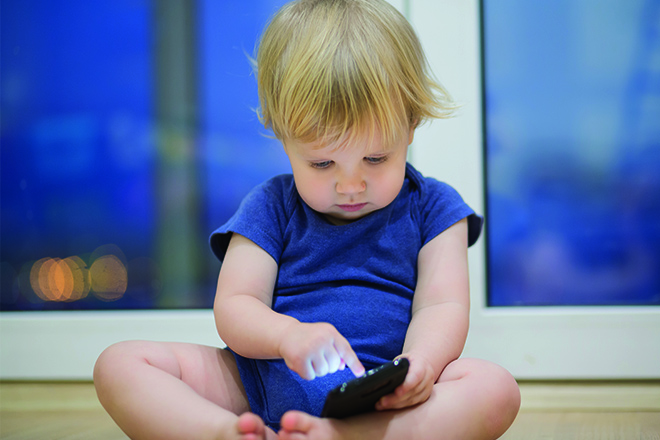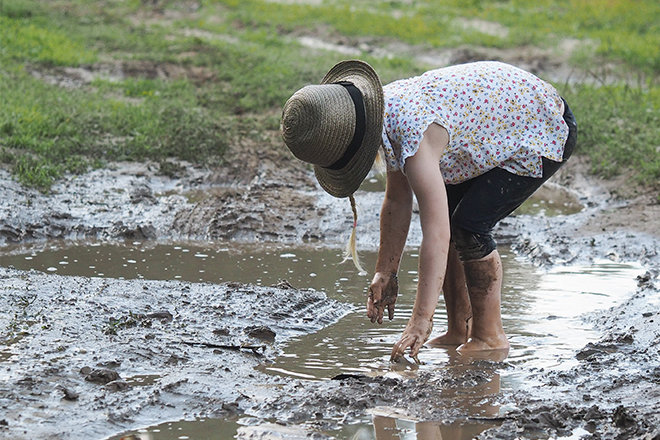As we adjust to the rapid increase of technological usage in our generation, there’s much to discuss about how the advances are impacting children. When considering the research about the development of brain function, how do these changes impact how children play, interact and develop?
Recently I was privileged to attend the ACEL Early Childhood Conference in Sydney with many world renowned key speakers. Despite these leading professionals, who are specialists in their fields, all coming from differing areas around the globe, there was a common thread in their messages relating to brain development, screen time and the great outdoors, and the important link between them.
Speakers included Michael Rich (Paediatrician from the USA), Nathan Wallis (Neuroscience Educator from New Zealand, Rachel Cowper (Leader Inspiring Scotland) and Pasi Sahlberg (a Finnish Educator and Scholar). The following information is my takeaway from the fore mentioned speakers. Information I felt was important to share both with my colleagues and our parent community.
The Age of the Brain
Since the 1990s we’ve been living in the age of the brain, where medical technology has supported how we understand the way the brain works and responds to stimuli.
In simple terms the brain consists of 4 parts and develops from the bottom to the top:
- Hindbrain (including the brain stem) – developing 0-6 months – this is the survival brain where the fight/flight/freeze response stems from depending on the level of attachment a baby has made.
- Midbrain – developing 6-18 months – is all about the development of movement including primitive reflexes, holding, waving, crawling and walking.
- Limbic brain – developing from 18 months-6 years – where emotions and feelings are the driving development during this stage.
- Cortical brain – developing between 7 years-26 years – this is where the thinking and learning happens and is a human only response. Everything that children will be assessed on at school comes from this stage of brain development.
Early childhood – not just babysitting
Whilst being brainy has something to do with a child’s genes, it’s also very dependent on what the child was exposed to during their first 1000 days of life. Early Childhood is not just babysitting a child’s genes until they go to school, or even getting them ready for school. It’s about helping to meet their needs in the emotional brain, and supporting the development of their dispositions; the attitudes, beliefs and behaviour on how they feel about themselves as a learner.
Parents and a child’s Early Childhood educators are most important during early development. With neuroplasticity at its highest level, children are able to be sculptured. By the time children enter Primary and Secondary schools, teachers are there to polish the sculpture.
It’s proven a female brain will develop quicker than a male brain. Also, interestingly, birth order will impact brain development. A first born child will usually get more attention from a parent in the early days, the important 1000 days, where interactions are vital to development at the very first stage.
What has changed over time?
What has become apparent over the last 10 years is the dramatic change in the way people interact. We can attribute much of this change to the introduction and accessibility of screens and devices.
Current research statistics suggest:
- 90% of children play with devices before the age of 1
- Most 2 year olds use a device daily
- 70% of the time, a device is used as a babysitting tool for young children
- 65% of the time, a device is used to calm
- 29% of the time, they are used to put a child to sleep, despite the blue light suppressing melatonin which aids sleep
- 75% of adolescents are using devices and 59% of them are constantly online and some are even using 2 screens at the same time!
 At family meal times, for 73% of the time, one or more family members are on a device. This has led to 20% less verbal interactions and 39% less non-verbal interactions. Have a look around the next time you are out for a meal with your family. What do you see? What are your meal time routines at home?
At family meal times, for 73% of the time, one or more family members are on a device. This has led to 20% less verbal interactions and 39% less non-verbal interactions. Have a look around the next time you are out for a meal with your family. What do you see? What are your meal time routines at home?
You’d think a playground is a great place to spend time with your children, engaging with their play experiences, guiding and challenging them. However it seems 30% of adults are distracted by screens, leading to children taking three times the risk, resulting in a huge rise of medical visits for injury.
It’s also proven more screen time equals a rise in obesity levels. This is driven by commercial TV as much as it is a portable device. Why you ask? Well, we all know the effects of marketing. When was the last time you saw a commercial for broccoli? Also when watching TV you have both hands free, free to eat. And not just any food! The high stimulus of TV requires the intake of high stimulus foods!
Getting outdoors can make a difference
In Scotland it was identified that children who were not well and not coping had a correlation to a lack of focus on learning. These observations spurred on an investigation into the health and well-being of the Early Childhood years. Through their research they noted there needed to be a cultural shift to get children outdoors. In there opinion, there’s no such thing as bad weather……just a need for better clothing choices!
The breadth of learning expands when outdoors because of the relationship the children have with natural and environmental factors.
 Although a child can use their finger to paint a picture on the iPad, consider other learning experiences they’re missing. When finger painting with mud they gain the sensory aspect of what mud actually feels like. And what about the science of water to dirt ratio to create just the right mud consistency? They’ll learn what it feels like to squish mud so it oozes through their fingers. What about the reaction when they decide to put mud all over their friend’s face! The limitations of an iPad soon become very apparent.
Although a child can use their finger to paint a picture on the iPad, consider other learning experiences they’re missing. When finger painting with mud they gain the sensory aspect of what mud actually feels like. And what about the science of water to dirt ratio to create just the right mud consistency? They’ll learn what it feels like to squish mud so it oozes through their fingers. What about the reaction when they decide to put mud all over their friend’s face! The limitations of an iPad soon become very apparent.
What is play and why is it important?
Play in both Scotland and Finland is considered serious business. But what is play? The word ‘play’ can be interpreted very differently, and to demonstrate this some countries have different words for different types of play- children’s play, sport style play, playing an instrument or drama plays. To Early Childhood educators play involves a variety of complex skills.
What can we do to support our children?
So with all this is mind what can we do? What action can we take?
- Technology is always going to be there. A crayon is a piece of technology so don’t give special power to screen devices! Introduce technology when the time is right and a need is demonstrated, ensuring that there are boundaries, routines, expectations and consequences.
- Take a family Sabbath 1 day a week, where no-one is allowed to have devices switched on. You will soon find the obligation of attending to others disappears.
- Let children be bored for it is through boredom that the brain flits from memories to senses and builds creativity and problem solving.
- Make plans for a child’s 24 hours so they don’t make screens the default to manage time.
- Access the outdoors for 15 minutes every hour, no matter what the weather may be.
- Don’t rush children to know their ABCs and 123s, let them play, and more importantly, let them lead the play!
Ultimately there always seems to be one question that remains……..is there such a thing as too much screen time? I’ll let you come to your own answer!
This article was written by Paula Hanna, Assistant Head of the Early Learning Centre at St Peter’s Woodlands Grammar School, Glenelg. SPW is an Anglican co-educational Early Learning and Primary school.